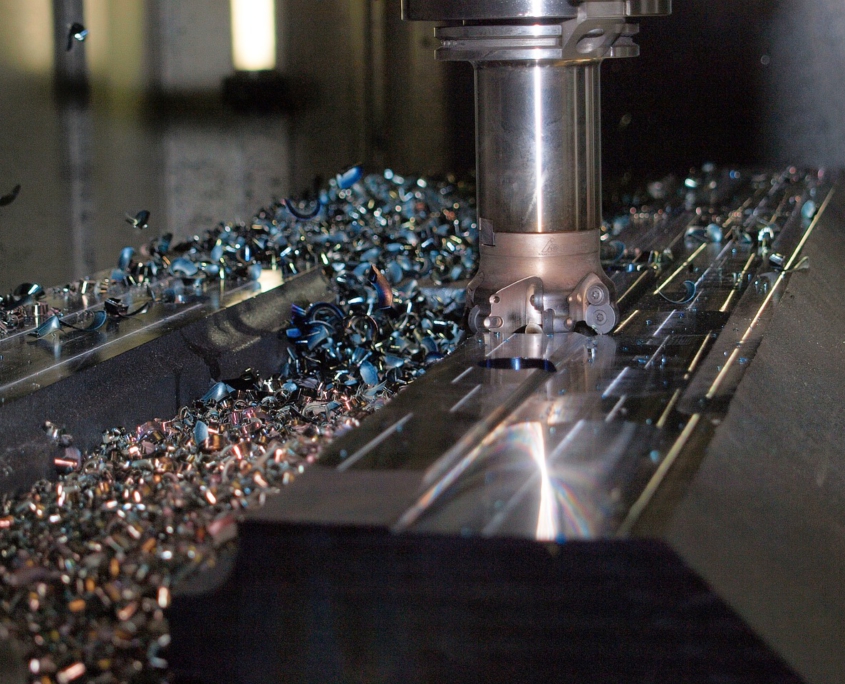Steel, i.e. an iron alloy containing less than 2% carbon and being forgeable, gives a different chip depending on the composition, heat treatment process and production technology. The type of chips produced is one of the factors characterizing the material’s susceptibility to machining, i.e. its machinability. Machinability of the workpiece should always be assessed in conjunction with the machining technology used, cutting tool material and cutting data.
Steel machinability is determined by the structure and mechanical properties (hardness, strength). The main problems in machining soft, low carbon steels are edge build-up and burr formation. When machining harder steel types, it is important to position the cutter to avoid chipping the edges. Currently, CNC dry milling of steel is recommended. Milling hardened steel can only take place dry, and for better chip evacuation use compressed air.
Martensitic stainless steel hardens during machining and exerts very high forces when the blade enters the material. To achieve the best results, use the correct tool path and arc approach (circular interpolation) and use a higher cutting speed, vc, to ensure better chip breaking during machining. Higher cutting speeds and cutters made of high impact material with reinforced cutting edge for greater safety.

